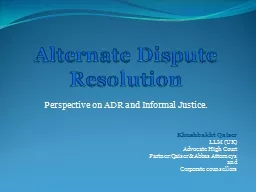PPT-Data Conflict Resolution
Author : liane-varnes | Published Date : 2018-02-09
Using Trust Mappings Wolfgang Gatterbauer amp Dan Suciu University of Washington Seattle June 8 Sigmod 2010 Project web page httpdbcswashingtonedubeliefDB Alice
Presentation Embed Code
Download Presentation
Download Presentation The PPT/PDF document "Data Conflict Resolution" is the property of its rightful owner. Permission is granted to download and print the materials on this website for personal, non-commercial use only, and to display it on your personal computer provided you do not modify the materials and that you retain all copyright notices contained in the materials. By downloading content from our website, you accept the terms of this agreement.
Data Conflict Resolution: Transcript
Download Rules Of Document
"Data Conflict Resolution"The content belongs to its owner. You may download and print it for personal use, without modification, and keep all copyright notices. By downloading, you agree to these terms.
Related Documents














